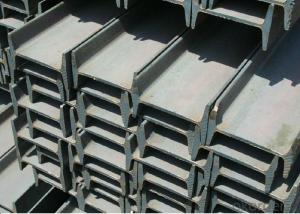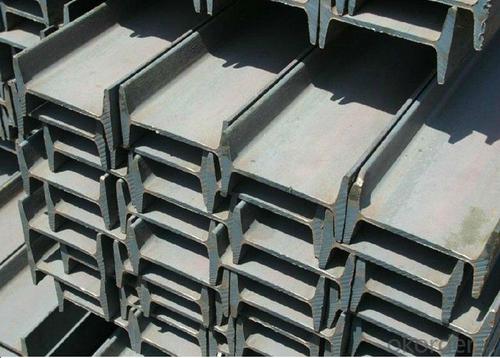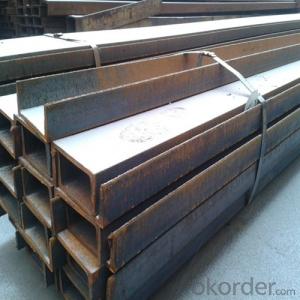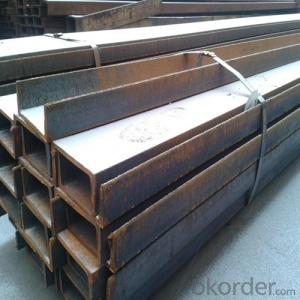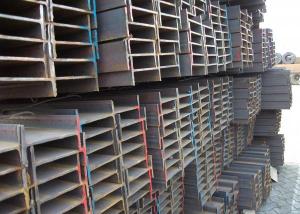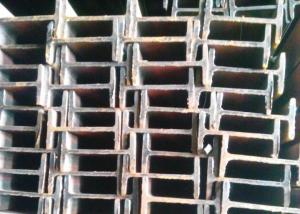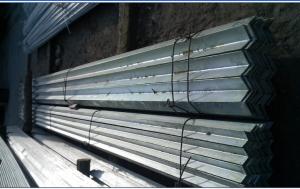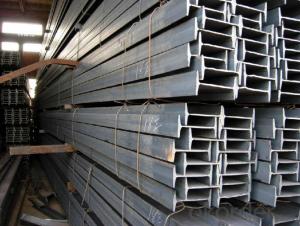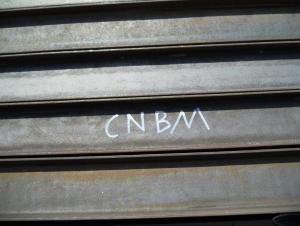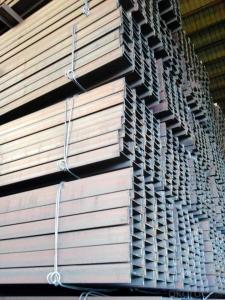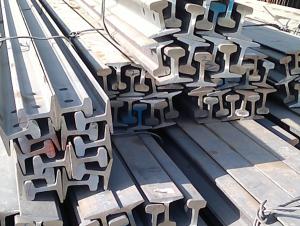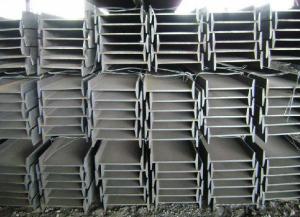Steel I-Beam with Good Quality and Price from China
- Loading Port:
- Tianjin
- Payment Terms:
- TT OR LC
- Min Order Qty:
- 25 m.t
- Supply Capability:
- 10000 m.t/month
OKorder Service Pledge
OKorder Financial Service
You Might Also Like
Specification
Okorder.com is a professional materials & equipment supplier & manufacturer, offers integrated one-stop services including real-time quoting and online cargo tracking. We are funded by CNBM Group, a Fortune 500 enterprise and the largest materials & equipment firm in China.
Product Applications:
IPE/IPEAA Beam Steel are widely used in various construction structures, bridges, autos, brackets, mechanisms and so on.
Product Advantages:
OKorder's Steel I-Beams are durable, strong, and resist corrosion.
Main Product Features:
· Premium quality
· Prompt delivery & seaworthy packing (30 days after receiving deposit)
· Corrosion resistance
· Can be recycled and reused
· Mill test certification
· Professional Service
· Competitive pricing
Product Specifications:
1. Product name: IPE/IPEAA Beam Steel
2. Standard: EN10025, GB Standard, ASTM, JIS etc.
3. Grade: Q235B, A36, S235JR, Q345, SS400 or other equivalent.
4. Length: 5.8M, 6M, 9M, 10M, 12M or as your requirements
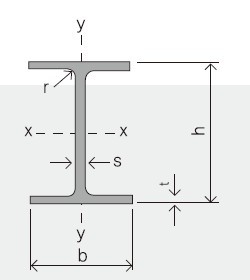
Section | Standard Sectional Dimensions(mm) | ||||
h | b | s | t | Mass Kg/m | |
IPE80 | 80 | 46 | 3.80 | 5.20 | 6.00 |
IPE100 | 100 | 55 | 4.10 | 5.70 | 8.10 |
IPE120 | 120 | 64 | 4.80 | 6.30 | 10.40 |
IPE140 | 140 | 73 | 4.70 | 6.90 | 12.90 |
IPE160 | 160 | 82 | 5.00 | 7.40 | 15.80 |
IPE180 | 180 | 91 | 5.30 | 8.00 | 18.80 |
IPE200 | 200 | 100 | 5.60 | 8.50 | 22.40 |
IPE220 | 220 | 110 | 5.90 | 9.20 | 26.20 |
IPE240 | 240 | 120 | 6.20 | 9.80 | 30.70 |
IPE270 | 270 | 135 | 6.60 | 10.20 | 36.10 |
IPEAA80 | 80 | 46 | 3.20 | 4.20 | 4.95 |
IPEAA100 | 100 | 55 | 3.60 | 4.50 | 6.72 |
IPEAA120 | 120 | 64 | 3.80 | 4.80 | 8.36 |
IPEAA140 | 140 | 73 | 3.80 | 5.20 | 10.05 |
IPEAA160 | 160 | 82 | 4.00 | 5.60 | 12.31 |
IPEAA180 | 180 | 91 | 4.30 | 6.50 | 15.40 |
IPEAA200 | 200 | 100 | 4.50 | 6.70 | 17.95 |
5.Color marking: There will be color marking on both end of the bundle for the cargo delivered by bulk vessel. That makes it easily to distinguish at the destination port.
Tag mark: there will be tag mark tied up on the bundles. The information usually including supplier logo and name, product name, made in China, shipping marks and other information request by the customer.
If loading by container the marking is not needed, but we will prepare it as customer request.
6. Shipment: In containers or in bulk cargo
FAQ:
Q1: Why buy Materials & Equipment from OKorder.com?
A1: All products are carefully selected from China's most reliable manufacturing enterprises. Through its ISO certifications, OKorder.com adheres to the highest standards and a commitment to supply chain safety and customer satisfaction. We can guarantee the quality!
Q2: How do we guarantee the quality of our products?
A2: We have established an advanced quality management system which conducts strict quality tests at every step, from raw materials to the final product. At the same time, we provide extensive follow-up service assurances as required.
Q3: Can you offer the third part inspection certificates ?
A3: Yes, we can apply third part inspection before shipping, such as SGS, BV, etc .
Images:
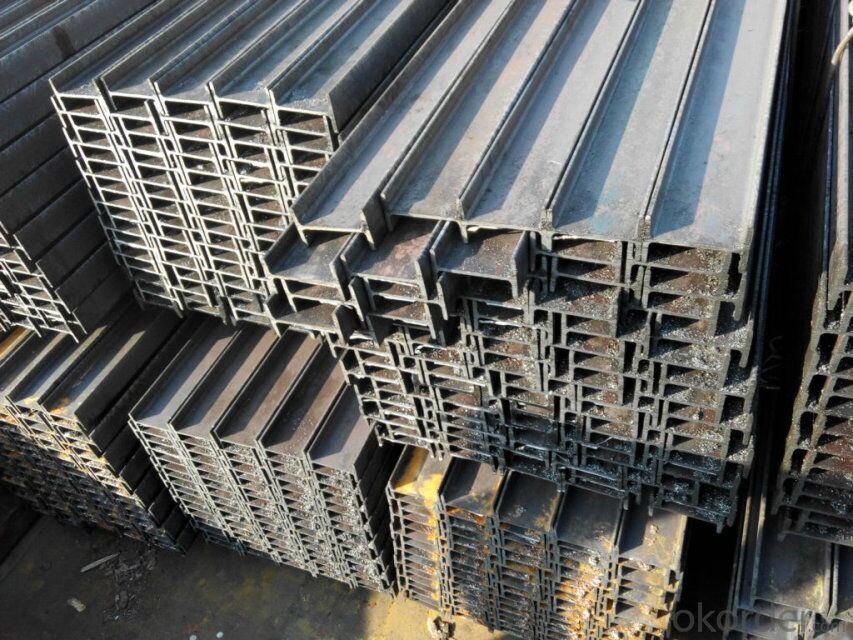

- Q: What is the standard size range for steel I-beams?
- The size of steel I-beams can differ based on the specific industry and usage. Nevertheless, typically, the widely utilized standard sizes for steel I-beams measure between 3 to 24 inches in height. The width or flange of the I-beam usually falls within 1.5 to 12 inches. These standardized dimensions cater to diverse construction and structural needs, delivering robustness and steadiness to a variety of buildings, bridges, and infrastructure ventures.
- Q: What are the common types of connections for steel I-beams in composite structures?
- The common types of connections for steel I-beams in composite structures include welded connections, bolted connections, and shear stud connections.
- Q: How do steel I-beams perform in corrosive environments?
- Steel I-beams typically perform well in corrosive environments due to their inherent resistance to corrosion. The high strength and durability of steel make it a preferred choice for construction materials, including I-beams, in areas where corrosion is a concern. However, the performance of steel I-beams in corrosive environments can vary depending on the specific conditions and the protection measures implemented. Steel I-beams are commonly manufactured with a protective coating, such as galvanization or painting, to enhance their resistance to corrosion. Galvanization involves applying a layer of zinc to the surface of the steel, creating a barrier that prevents direct contact between the steel and corrosive agents. This process significantly extends the lifespan of the I-beams in corrosive environments, making them highly reliable and long-lasting. The protective coating on steel I-beams not only acts as a physical barrier but also provides a sacrificial layer that corrodes instead of the steel itself. This sacrificial corrosion process further enhances the lifespan of the I-beams by sacrificing the coating while protecting the underlying steel structure. However, it is important to note that even with a protective coating, steel I-beams may still be susceptible to corrosion in highly aggressive environments, such as those with extremely high humidity, chemical exposure, or saltwater exposure. In such cases, additional corrosion protection measures, such as regular inspection, maintenance, and the use of specialized coatings, may be necessary to ensure optimal performance and longevity. Overall, steel I-beams are well-suited for corrosive environments due to their inherent resistance and the protective coatings applied during manufacturing. Proper maintenance and monitoring are crucial to ensure the continued performance of steel I-beams in corrosive environments and to identify and address any potential corrosion issues promptly.
- Q: Can steel I-beams be used for utility pole supports?
- No, steel I-beams are not typically used for utility pole supports. Utility poles require specific types of poles and materials that are designed to withstand the load and stress of supporting electrical wires, cables, and other equipment. These poles are usually made of wood, concrete, or fiberglass, as they offer the necessary strength and flexibility to handle the weight and forces involved. Steel I-beams may be used in other construction applications, but they are not commonly used for utility pole supports.
- Q: What is the difference between steel tubes such as channel steel and square tube?
- The use of square construction, machinery manufacturing, shipbuilding, steel construction projects, solar power support, steel structure engineering, power engineering, power plant, agricultural and chemical machinery, glass curtain wall, car chassis, airport, boiler construction, highway railings, housing construction, pressure vessels, oil tanks, bridges, power station equipment. Cranes and other high load welding etc..
- Q: Are steel I-beams resistant to impact or blast loads?
- Steel I-beams are renowned for their exceptional strength and durability, rendering them highly suitable for a diverse array of structural uses. When it comes to withstanding impact or blast loads, steel I-beams generally demonstrate outstanding performance. Under the influence of impact loads, such as collisions or the descent of hefty objects, steel I-beams possess a formidable capacity to absorb and distribute the applied force. The structural attributes of steel, including its remarkable tensile strength and ductility, allow it to deform and absorb energy without incurring significant damage. As a result, steel I-beams exhibit greater resistance to impact loads when compared to alternative materials. In the same vein, steel I-beams also provide substantial resistance against blast loads, which encompass sudden and high-intensity pressure waves generated by explosions. The intrinsic strength and stiffness of steel empower it to withstand the dynamic forces that accompany blast loads. Moreover, the weight and rigidity of steel I-beams contribute to their capacity to counteract pressure and disseminate the energy unleashed by a blast. One must bear in mind that the specific resistance of steel I-beams to impact or blast loads can fluctuate based on factors such as the beam's size and design, the type and magnitude of the load, and the overall structural configuration. Consequently, conducting engineering analysis and considering design aspects are indispensable in ensuring the fitting selection and placement of steel I-beams that can withstand impact or blast loads in any given application.
- Q: How do you calculate the shear deflection in a steel I-beam?
- To calculate the shear deflection in a steel I-beam, the first step is to determine the maximum shear stress at any point along the beam's cross-section. This can be done using the formula for shear stress, which is equal to the shear force divided by the area over which the force is applied. Once the maximum shear stress is determined, it is necessary to find the shear modulus or modulus of rigidity of the material. This is a material property that relates shear stress to shear strain. Finally, the shear deflection can be calculated using the formula for shear deflection, which states that the deflection is equal to the shear force multiplied by the beam length cubed, divided by the product of the shear modulus and the moment of inertia of the beam's cross-section. It is important to note that this calculation assumes linear elastic behavior and neglects any geometric imperfections or non-uniformities in the beam. For more accurate results, finite element analysis or experimental testing may be required.
- Q: How do steel I-beams contribute to sustainable construction?
- Steel I-beams contribute to sustainable construction in several ways. Firstly, steel is a highly durable and long-lasting material, meaning that structures built with I-beams have a longer lifespan and require fewer repairs or replacements, reducing the overall environmental impact. Additionally, steel is a highly recyclable material, and I-beams can be easily recycled at the end of their life, minimizing waste and conserving resources. Moreover, the strength and load-bearing capacity of steel I-beams allow for more efficient and lightweight construction, reducing the amount of material needed and minimizing energy consumption during transportation and construction. Overall, steel I-beams offer sustainability benefits through their durability, recyclability, and efficiency in construction.
- Q: Can steel I-beams be used for educational institutions such as schools or universities?
- Yes, steel I-beams can be used for educational institutions such as schools or universities. Steel I-beams are commonly used in the construction industry due to their strength and durability. They provide structural support and can withstand heavy loads, making them suitable for large buildings like educational institutions. Steel I-beams offer several advantages for educational institutions. Firstly, they allow for the construction of large open spaces, such as gymnasiums or auditoriums, without the need for excessive support columns, maximizing usable space. This is particularly beneficial for schools and universities that require flexible spaces for various activities. Additionally, steel I-beams are fire-resistant, which is an important safety consideration for educational institutions. They have a high melting point and do not contribute to the spread of flames, providing a safer environment for students and staff. Moreover, steel I-beams are highly customizable and can be fabricated to meet specific design requirements. This allows for the construction of aesthetically pleasing and modern educational facilities, incorporating features such as large windows, open floor plans, and innovative architectural designs. Furthermore, steel is a sustainable material, as it is recyclable and can be repurposed at the end of its life cycle. This aligns with the growing emphasis on environmentally friendly construction practices in educational institutions. In conclusion, steel I-beams are suitable for educational institutions like schools or universities due to their strength, durability, fire resistance, and design flexibility. Their use can result in the construction of safe, modern, and sustainable educational facilities that meet the evolving needs of students and staff.
- Q: Can steel I-beams be used for aircraft hangars?
- Yes, steel I-beams can be used for aircraft hangars. Steel I-beams are commonly used in construction due to their strength and durability. They provide excellent support for large structures, including aircraft hangars, which require a strong framework to accommodate the weight and size of airplanes.
Send your message to us
Steel I-Beam with Good Quality and Price from China
- Loading Port:
- Tianjin
- Payment Terms:
- TT OR LC
- Min Order Qty:
- 25 m.t
- Supply Capability:
- 10000 m.t/month
OKorder Service Pledge
OKorder Financial Service
Similar products
Hot products
Hot Searches
Related keywords
